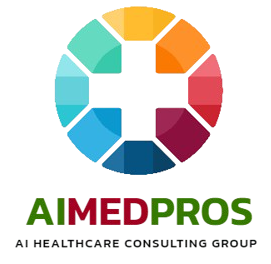Introduction
The evolution of multimodal AI platforms from one-shot to multi-shot, reasoning-based systems has significant implications for various sectors, including healthcare administration. When we add the convergence of vision, audio, and other sensory skills, the emerging AI systems promise to transform healthcare in ways that few are able to imagine.
Current State of AI in Healthcare
One-Shot AI Applications
Today, one-shot AI applications in healthcare are primarily used for tasks like diagnosing diseases from medical images, processing patient data, and providing recommendations for treatment. These systems generate responses or complete tasks based on specific inputs without the need for continuous learning or adaptation.
Future State: Multi-Shot AI in Healthcare
Enhanced Diagnostic and Treatment Planning
Multi-shot AI systems, with their ability to engage in complex, multi-step reasoning, will reshape diagnostic and treatment planning processes. These AI systems can analyze vast amounts of patient data, consider multiple diagnostic possibilities, and plan treatment steps, much like a team of medical professionals would.
Example: Cancer Treatment
For instance, in cancer treatment, multi-shot AI could analyze patient histories, genetic information, and clinical trial data to develop personalized treatment plans. This approach ensures that all relevant factors are considered, leading to more accurate and effective treatments.
Continuous Monitoring and Adaptation
Unlike current one-shot models, future AI systems will continuously monitor patients’ health, adapting to changes in real-time. This capability is particularly crucial for managing chronic diseases, where continuous monitoring and timely interventions can significantly improve patient outcomes.
Example: Diabetes Management
For diabetes patients, AI systems can continuously monitor blood glucose levels, dietary habits, and physical activity. By analyzing this data in real-time, the AI can provide personalized recommendations and alerts, helping patients maintain optimal health and avoid complications.
Administrative Efficiency and Cost Reduction
Streamlining Administrative Tasks
Multi-shot AI can automate and streamline numerous administrative tasks, reducing the burden on healthcare staff and lowering operational costs. Tasks such as appointment scheduling, billing, and patient record management can be efficiently handled by AI systems, freeing up human resources for more critical tasks.
Example: Appointment Scheduling
An AI system could manage appointment schedules by analyzing patient data and healthcare providers’ availability, optimizing the scheduling process to minimize wait times and maximize resource utilization.
Predictive Analytics and Resource Management
AI systems with advanced reasoning capabilities can predict patient admission rates, optimize resource allocation, and manage supply chains more effectively. This predictive power ensures that healthcare facilities are better prepared to meet patient needs, especially during peak times or emergencies.
Example: Hospital Resource Management
In hospitals, AI can predict patient inflow based on historical data and current trends, allowing administrators to allocate staff, beds, and medical supplies more effectively. This proactive approach enhances patient care and operational efficiency.
Ethical and Regulatory Considerations
Ensuring Ethical AI Use
As AI systems become more integral to healthcare administration, ensuring their ethical use becomes paramount. AI must be designed and implemented to uphold patient privacy, ensure data security, and avoid biases in decision-making.
Example: Data Privacy
Healthcare administrators must ensure that AI systems comply with regulations like HIPAA in the US, protecting patient data from unauthorized access and breaches. Transparent AI algorithms and regular audits can help maintain trust and accountability.
Regulatory Compliance and Standards
The integration of advanced AI systems in healthcare will require robust regulatory frameworks to ensure safety, efficacy, and ethical standards. Developing and adhering to these frameworks will be crucial for the successful deployment of AI in healthcare.
Example: FDA Approval
In the US, AI systems used for diagnostic purposes must undergo rigorous evaluation and approval by the FDA. Ensuring compliance with these standards is essential for maintaining patient safety and trust in AI-driven healthcare solutions.
Conclusion
The advent of multi-shot, reasoning-based AI systems holds the potential to revolutionize healthcare administration. By enhancing diagnostic accuracy, improving treatment planning, streamlining administrative tasks, and optimizing resource management, these advanced AI systems can significantly improve patient outcomes and operational efficiency. However, ensuring ethical use and regulatory compliance will be critical to realizing the full potential of AI in healthcare. As the healthcare landscape evolves, continuous learning and adaptation will be essential for healthcare professionals and administrators to effectively integrate AI into their practices.


Hi, this is a comment.
To get started with moderating, editing, and deleting comments, please visit the Comments screen in the dashboard.
Commenter avatars come from Gravatar.